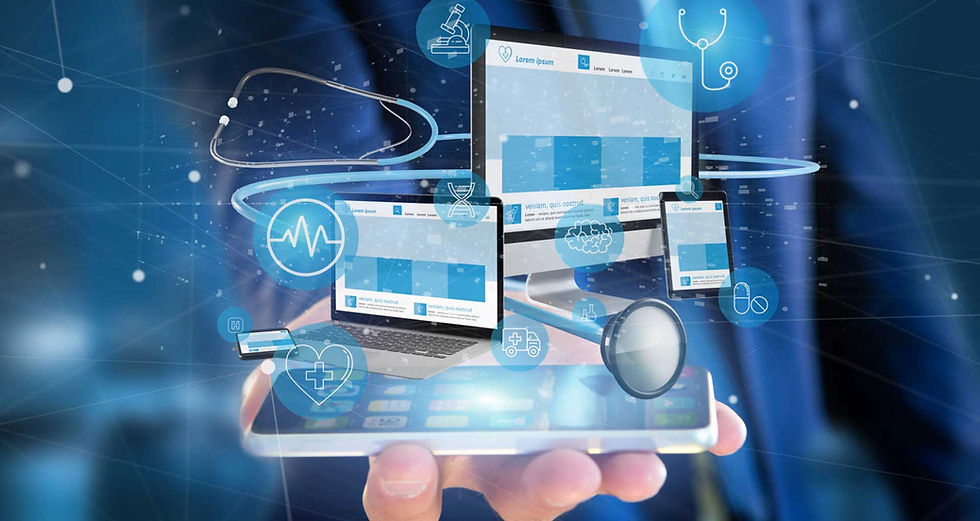10 Features of Best Medical Device Asset Management Software
- Info Health Solutions

- Aug 13
- 3 min read

In 2025, the healthcare industry faces a dual challenge: delivering top-quality patient care while reducing operational costs. One of the most effective ways to achieve this balance is by using medical device asset management software. This technology ensures every piece of equipment—whether a ventilator, infusion pump, or MRI machine is tracked, maintained, and utilized to its fullest potential.
From improving compliance to preventing costly breakdowns, the right solution can transform how a healthcare facility operates. But with so many options available, how do you choose the best one? This guide breaks down the top 10 must-have features to look for in 2025.
1. Real-Time Asset Tracking
The best medical device asset management software uses IoT sensors, RFID tags, or GPS to give you a live view of where every device is located. This eliminates wasted time searching for equipment and ensures critical devices are always ready when needed.
Why it matters in 2025: Real-time visibility prevents delays in treatment, improves staff productivity, and ensures you meet tight care schedules.
2. Predictive Maintenance Capabilities
Gone are the days of reactive repairs. Modern systems use AI and machine learning to monitor equipment performance and predict failures before they happen.
Example: If a ventilator shows irregular usage patterns or increased operating temperature, the software can trigger a maintenance alert before it fails during patient care.
Benefit: Reduced downtime, extended equipment lifespan, and lower emergency repair costs.
3. Centralized Inventory Management
A unified dashboard for all medical devices means no more juggling spreadsheets or disconnected systems. Centralized management allows you to track every asset’s location, condition, maintenance schedule, and usage history in one place.
Why it matters: Facilities with hundreds or thousands of devices can’t afford scattered information. Centralized visibility helps decision-makers respond faster.

4. Compliance Automation
Healthcare is one of the most regulated industries in the world. Top-tier medical device asset management software in 2025 should automatically log maintenance records, usage data, and calibration certificates—ready for any audit.
Benefit: Avoid costly fines, ensure patient safety, and save administrative hours spent preparing for inspections.
5. Lifecycle Management Tools
Every device has a lifecycle—from purchase and deployment to repair and replacement. The best systems analyze real-time performance and maintenance costs to recommend when it’s more cost-effective to replace an asset rather than repair it.
Why it matters: Strategic replacement planning reduces wasted spending and ensures high-quality care delivery.
6. Mobile Accessibility
In 2025, mobility is no longer optional. Technicians and nurses need to access asset records, log repairs, and check availability from anywhere—whether they’re in the ICU, operating theater, or off-site.
Example: A nurse scanning a barcode on a defibrillator can instantly see when it was last serviced, ensuring it’s safe to use.
7. Customizable Reporting
Not every facility needs the same type of data. The ability to generate custom reports—such as cost-per-patient, equipment downtime, or maintenance turnaround—empowers leaders to make smarter operational decisions.
Benefit: Reports can be tailored for finance teams, compliance officers, or clinical managers, without wasting time on irrelevant data.
8. Seamless Integration with Hospital Systems
The most powerful medical device asset management software integrates with electronic medical records (EMR), enterprise resource planning (ERP) systems, and billing software.
Why integration matters:
Sync usage data with patient records for accurate billing.
Automatically schedule preventive maintenance based on patient load.
Reduce duplicate data entry, which saves time and reduces errors.
9. Strong Data Security
With cyberattacks on healthcare rising, protecting equipment data is essential. Leading solutions offer HIPAA-compliant encryption, multi-factor authentication, and role-based access controls.
Benefit: Keeps sensitive information—such as patient usage history—safe from unauthorized access while meeting legal obligations.
10. Cost Optimization Insights
Ultimately, the right software should help you save money without compromising care quality. By identifying underutilized devices, tracking repair frequency, and flagging high-cost assets, you can make informed decisions that directly improve ROI.
Example: If your MRI machine is underutilized, the software may suggest redistributing it to a busier department or adjusting scheduling practices.
How to Choose the Right Medical Device Asset Management Software in 2025
When evaluating solutions, focus on:
Scalability: Can it grow with your facility?
Vendor support: Does it offer 24/7 technical assistance?
User-friendliness: Will staff adopt it easily?
Customization: Can you tailor it to your workflows?
The Bottom Line
The best medical device asset management software in 2025 does more than track equipment—it empowers healthcare providers to make smarter, faster, and more cost-effective decisions. By prioritizing these 10 features, hospitals can reduce downtime, extend asset lifespan, and deliver better patient outcomes.
If you’re ready to transform your medical asset management approach, now is the time to explore advanced, AI-powered solutions designed for today’s fast-paced healthcare environment.



Comments